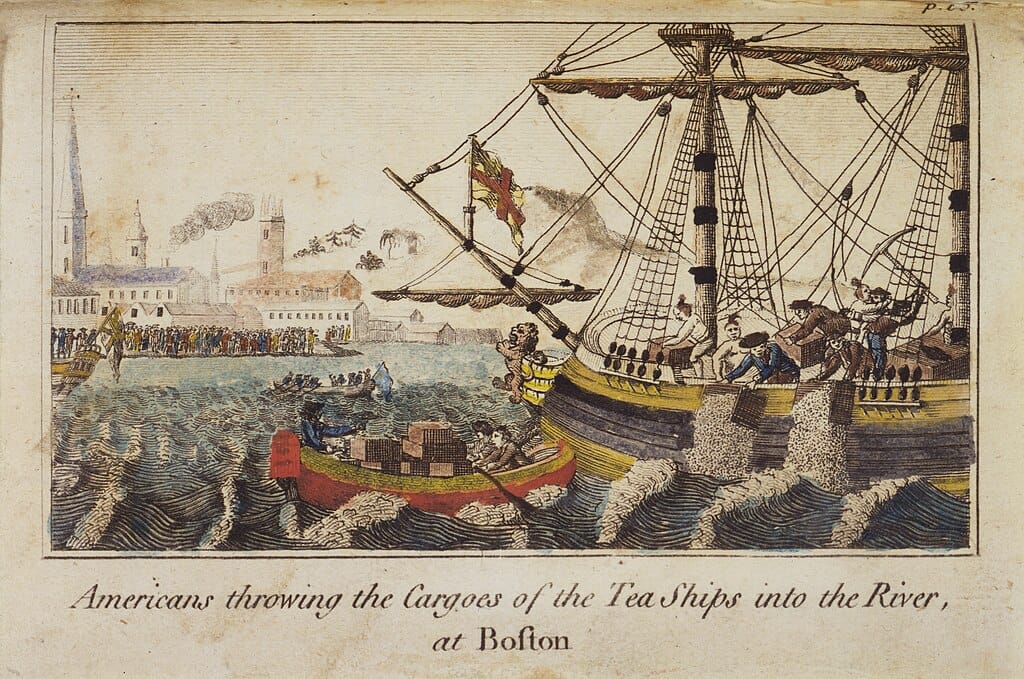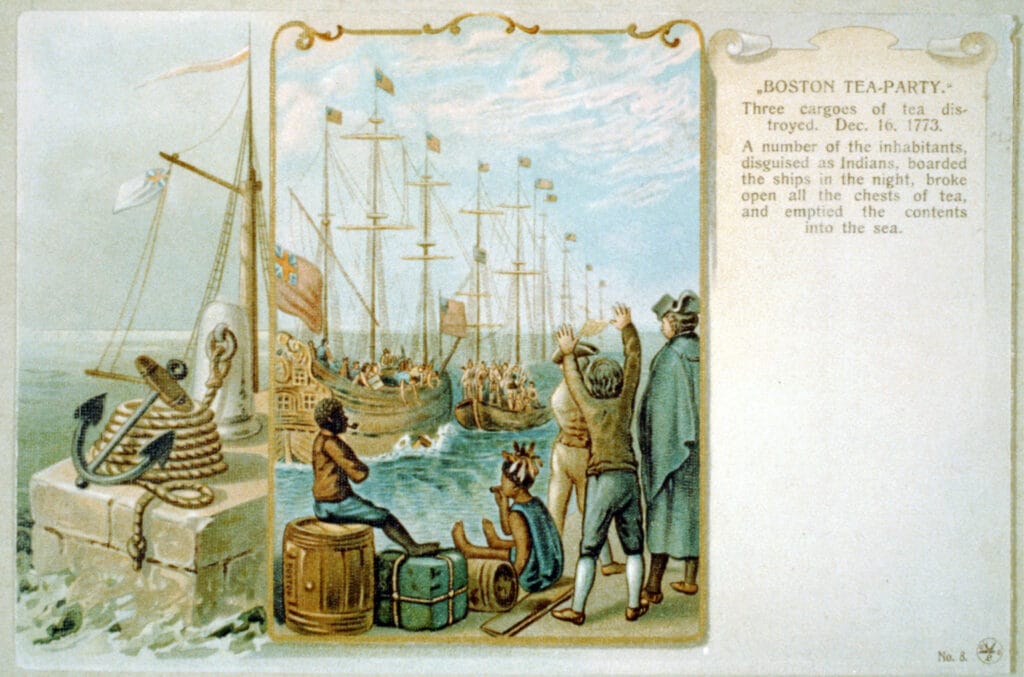What is Boston Tea Party
What is Boston Tea Party? Discover who was involved, why it happened, and how it shaped American history in this deep dive into a pivotal Revolutionary moment.

Introduction: What is Boston Tea Party
It is a matter of time – only tea was taxed. But the matter did not stop there. This small matter turned into such a revolt that changed the direction of American history. Boston Tea Party was not just a protest against tea – it was a strong message: “We will not tolerate rule without justice and without tradition.“
So what was the Boston Tea Party? And why does this incident still reverberate in the heart of every American?
Let’s take a deeper look.
What was the Boston Tea Party?
The Boston Tea Party was a political protest on 16 December 1773 in Boston, Massachusetts. This protest was led by American colonists (known as “Patriots“) against the British government’s Tea Act of 1773.
Under this act, the British East India Company was allowed to sell its tea directly in its colonies without paying colonial taxes. This meant that British tea became cheaper than local or smuggled tea, and this caused losses to colonial merchants, and it also showed that Britain could levy taxes without any representation. This protest was against the tea tax but the sentiment behind it was something else—freedom and the right to raise one’s voice.
The Boston Tea Party who was Involved?
This protest was led by Samuel Adams, who was one of the biggest opponents of British rule. Along with him were the Sons of Liberty, a secret group who wanted to take a stand against British tyranny.
On the night of December 16, about 100 people disguised as Mohawk Native Americans to hide their identity and emphasize their American identity boarded three British ships standing at Griffin’s Wharf. These ships were: Dartmouth, Eleanor, and Beaver—all full of tea.
And what happened next?
A protest that shook the world.

Boston Tea Party: In protest of British taxation, American colonists threw crates of tea into Boston Harbor. Frustrated by what they saw as unfair taxes imposed by the British government, they took a bold stand. As shown in illustrations from the event, many participants disguised themselves as Mohawk Indians during the act.
What Happened to the Boston Tea Party
On the evening of December 16, 1773, some protestors—disguised as Native Americans—boarded three British ships in Boston Harbor and dumped 342 chests full of East India Company tea into the ocean.
In the cold and darkness, these people silently boarded the ships and opened the wooden chests with axes and dumped the tea into the water. Approximately 92,000 pounds of tea were destroyed—worth around $1.7 million today. The Harbor smelled like tea for several days!
This protest was not done out of anger, but with discipline and purpose. No one was hurt, and the protestors cleared the decks! The message was clear:
“We reject your taxes—and your tyranny.”
Why did the Boston Tea Party happen?
Colonists were angry with the Tea Act, not because tea had become expensive (in fact, tea had become cheap) but because it had become a symbol of British power.
This act gave the British Parliament the right to levy taxes without any colonial consent. For the colonists, it was:
“Taxation without representation.”
They believed that only their elected assemblies could tax them, not any parliament sitting in London.
So the Boston Tea Party was not just a matter of tea—it was a bold political and economic protest. This was the moment when tension between Britain and its colonies reached its peak.
How did the British respond to the Boston Tea Party?
The British government did not take this incident lightly. They passed some Coercive Acts (i.e., Intolerable Acts) in 1774:
- Boston Harbor was closed until the money for tea was paid
- Massachusetts’s self-government was abolished
- British officials accused of crimes were tried in England
- Colonists were forced to keep British soldiers in their homes (Quartering Act)
These laws were so strict that the colonies were united even more. Punishment backfired—it backfired. The Boston Tea Party was no longer just a local protest, it had become a national spark that led to the Revolutionary War.
Importance of the Boston Tea Party
We still remember the Boston Tea Party because it was one of the most iconic moments of the American Revolution.
The protests are a reminder that ordinary people can speak out against an empire.
It wasn’t just about taxes—it was about taking a stand against British laws and their stubborn control.
And most importantly, it sent a message:
“We decide how we are governed.”
The Boston Tea Party left a legacy that remains a symbol of democracy, protest, and people’s power to this day.”
7 Fact about the Boston Tea Party
Here’s a quick snapshot of key details:
- Date Boston Tea Party: December 16 1773.
- Boston Tea Party Locations: Boston Harbor, Massachusetts.
- What the Boston Tea Party was really about: Destruction of 342 chests of British tea.
- Why did the Boston Tea Party take Place?: Protest against the Tea Act and taxation without representation.
- Who was involved in the Boston Tea Party?: Around 100 Patriots, including the Sons of Liberty, led by Samuel Adams.
- Ships involved in the Boston Tea Party: Dartmouth, Eleanor, Beaver.
- What was a Result of the Boston Tea Party: Triggered the Intolerable Acts and united colonial resistance.
Boston Tea Party Symbols
Today, the Boston Tea Party remains a symbol of protest. It reminds us of the power of protest—and the value of freedom. Whether it is in history books or political slogans, the echo of that December night still reverberates.
When some colonial people threw tea leaves into Boston Harbor, they didn’t just tarnish Britain’s image—they started a revolution.
“The Tea destroyed is not the property of individuals, but of the East India Company. The act is the last straw in a long list of grievances.”
— Samuel Adams
Summary The Boston Tea Party
The Boston Tea Party was not just a small movement—it was a political protest against British taxes by people who believed they should have a say in their future.
It was a well-planned event filled with deep meaning.
And while all this happened 250 years ago, its message is still relevant today: freedom is sought, but not obtained.
So the next time you take a sip of tea, remember that seashore where it all began.
